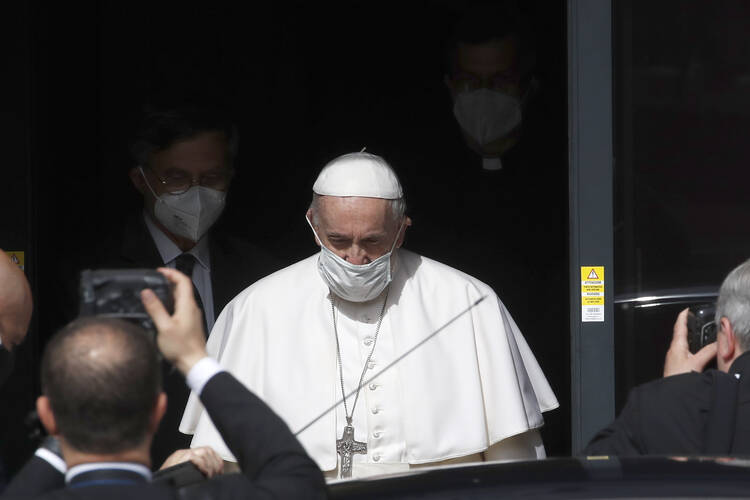ROME (AP) — Pope Francis challenged the Vatican’s own media employees Monday to essentially justify their continued work, asking them how many people actually consume their news in a critique of the office that costs the Holy See more than all its embassies around the world combined.
Francis visited the Dicastery of Communications, Vatican Radio and the headquarters of the Vatican’s newspaper, L’Osservatore Romano, which is marking its 160th anniversary. He appeared to use the occasion to lay down the gauntlet at a fraught financial time for the Holy See.
Facing a major pension funding shortage and a projected 50 million euro ($61 million) deficit this year, Francis has ordered salary cuts from 3% to 10% for Vatican employees, both lay and religious, and paused seniority bonuses for two years.
Francis has vowed not to fire anyone to offset the economic crisis created by COVID-19 and the pandemic-related shuttering of one of the Holy See’s main sources of revenue, ticket sales from the Vatican Museums.
But in a warning of sorts to the Vatican communications staff, he opened his unscripted remarks Monday with a pointed question.
“There are a lot of reasons to be worried about the Radio, L’Osservatore, but one that touches my heart: How many people listen to the Radio? How many people read L’Osservatore Romano?” Francis asked.
He said their work was good, their offices nice and organized, but that there was a “danger” that their work doesn’t arrive where it is supposed to. He warned them against falling prey to a “lethal" functionality where they go through the motions but don't actually achieve anything.
The question has been posed many times, since the Vatican’s communications office consumes more of the budget than any other department: According to the latest figures, the Dicastry for Communications had a 43 million euros ($52.5 million) budget for 2021, around 20 percent of the whole.
Its expenses are greater than the combined expenses of the 10 smallest Vatican departments.
The Vatican has long justified the costs because its communications operations are at the core of the Holy See’s main mission: to communicate the Catholic faith to all corners of the globe.
The cuts Francis has imposed across the board have sparked a minor revolt among Vatican employees. They penned a blistering open letter May 20 expressing their “dismay and profound discouragement” at the cuts, lack of overtime and uncompensated increased workload, which they said didn't conform to the Catholic Church’s social doctrine.
They lamented in particular the great disparities in pay and benefits, especially for some lay managers and outside consultants on whom the Holy See relies heavily to oversee and clean up its finances.
“One cannot ignore the economic difficulties that families are today called to confront as a result of the pandemic,” they lamented in asking for a meeting to discuss their concerns.








